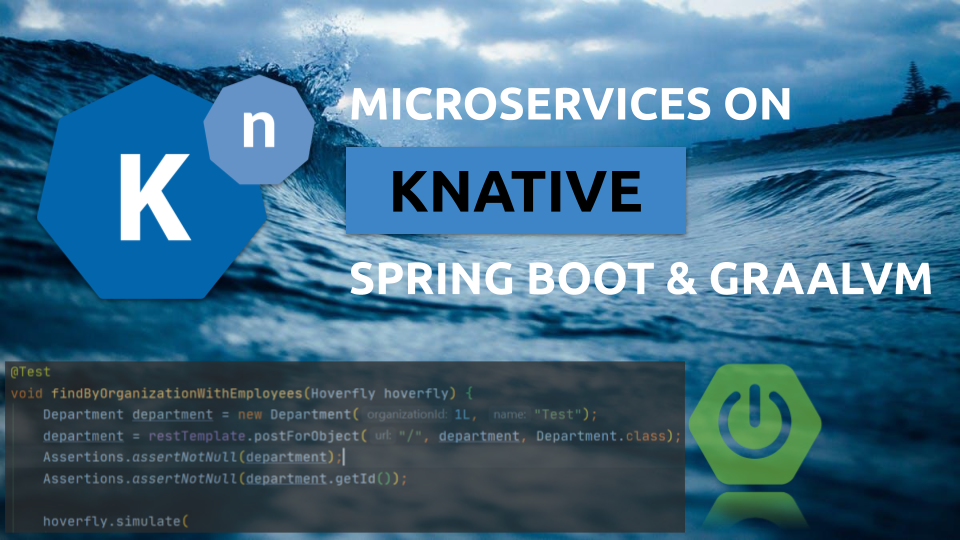In this article, you will learn how to run Spring Boot microservices that communicate with each other on Knative. I also show you how to prepare a native image of the Spring Boot application with GraalVM. Then we will run it on Kubernetes using Skaffold and the Jib Maven Plugin.
This article is the second in a series of my article about Knative. After publishing the first of them, Spring Boot on Knative, you were asking me about a long application startup time after scaling to zero. That’s why I resolved this Spring Boot issue by compiling it to a native image with GraalVM. The problem with startup time seems to be an important thing in a serverless approach.
On Knative you can run any type of application – not only a function. In this article, when I’m writing “microservices”, in fact, I’m thinking about service to service communication.
Source Code
If you would like to try it by yourself, you may always take a look at my source code. In order to do that you need to clone my GitHub repository. Then you should just follow my instructions
As the example of microservices in this article, I used two applications callme-service and caller-service. Both of them exposes a single endpoint, which prints a name of the application pod. The caller-service application also calls the endpoint exposed by the callme-service application.
On Kubernetes, both these applications will be deployed as Knative services in multiple revisions. We will also distribute traffic across those revisions using Knative routes. The picture visible below illustrates the architecture of our sample system.
1. Prepare Spring Boot microservices
2. Prepare Spring Boot native image with GraalVM
3. Run native image on Knative with Buildpacks
4. Run native image on Knative with Jib
5. Communication between microservices on Knative
6. Configure tracing with Jaeger
#kubernetes #microservices #spring boot #jaeger
